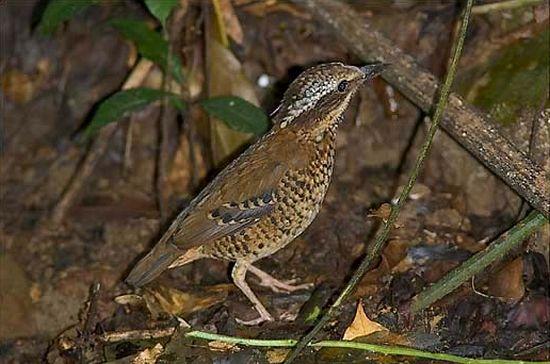Pitta phayrei
IUCN
LCBasic Information
Scientific classification
- name:Pitta phayrei
- Scientific Name:Pitta phayrei,Eared Pitta,Magpie Yellow Oriole
- Outline:Songbird
- Family:Passeriformes Pittidae Pitt
Vital signs
- length:21-24cm
- Weight:90-100g
- lifetime:9-11years
Feature
The body is round and plump, with a short tail and long legs. The male bird has a black crown from the top of the head to the back of the neck.
Distribution and Habitat
Distributed in central and northern Myanmar, northern Shan State, southern Shan State, Tanassa Forest, Thailand, Laos, Cambodia, Vietnam, northern Indonesia, etc. In China, it is only distributed in Xishuangbanna in southern Yunnan.
It lives in tropical rainforests and is a rare resident bird. It is found in evergreen forests and shaded secondary forests above 800 meters above sea level in Xishuangbanna, China and southern Yunnan.
Appearance
The feather color of the double-braided thrush is darker and not as bright as other thrushes. The plumage color of male and female birds is roughly the same. The central crown stripe from the top of the head to the back of the neck is black, the skin on the forehead and both sides of the crown stripe is yellow, the eyebrow lines are almost white, and each feather is decorated with black end spots, which are scaly; the feathers on both sides of the back occiput are prominent, with yellow skin and The black and white horizontal spots, with white feather tips, are spear-shaped and shaped like double braids, which is distinctive and very unique. The back is all chestnut brown, and the primary flight feathers are dark brown. The chin and throat are white, the feather edges are black, and the feather rachis is extended into a whisker shape; the rest of the lower body is brownish-yellow, and it is darker from the lower throat to the chest and both flanks, with several black spots of different
Details
Double-braided Pitta, with no subspecies.

Double-braided Pitta forages in bamboo forests and bushes, using its powerful claws and beak to flip dead leaves on the ground to find food, feeding on insects. They often move on the ground. Because their feathers are very similar to dead leaves and they are good at jumping, they can easily avoid people's sight and appear in another place, still turning over dead leaves to find food. A typical pitta thrush that lives at the bottom of the forest.
The call of the double-braided pitta thrush is like a falsetto whistle "wheeow-whit" similar to the blue pitta thrush, but the first note is prolonged. The call is mostly made at dusk. When giving an alarm, it makes a dog-like barking sound.
The breeding season of the Double-braided Pitta is from May to July. In late May, it builds a nest in a tall natural broad-leaved forest. The male and female birds jointly build the nest. One parent bird uses its claws to clear the weeds and fallen leaves on the ground at the nest site to form a round pit, while the other parent bird searches for nesting materials on the ground within a range of about 30 meters around the nest. First, use the dead branches of maple, poplar, chestnut and other trees to pile up a platform-like nest foundation on the round pit on the ground to keep the nest stable and prevent the nest built on it from rolling down the slope. It also has the function of waterproofing and moisture-proofing. Then, mix and coil weeds, mosses, twigs, thin stems, etc. to build an elliptical ground nest with an outer diameter of about 20 cm, an inner diameter of about 7 cm, and a depth of 15-19 cm. The nest is covered with finer weeds, petioles, pine needles and leaves, etc. There are many small bushes or ferns in front of the nest to hide the nest.
Each nest lays 4 eggs, which are white, 27.5×22 mm in size, and weigh 5-6 grams. The parent bird does not sit on the nest or move around the nest until all the eggs are laid. Incubation begins only after the last egg is laid. Incubation is shared by male and female birds, and they both have a strong love for nests. When one parent bird is hatching, the other one will sing and be on guard in a tree or on the ground near the nest. When the parent birds change incubation, they will first sing to each other, then the parent bird sitting in the nest will fly out of the nest first, and the other parent bird will enter the nest to hatch after a few minutes.
Listed in China's national key protection level - Level 2, effective year: 1989
Listed in China's Red List of Endangered Animals - Rare, effective year: 1996
Listed in the 2013 Red List of Endangered Species of the World Conservation Union (IUCN) ver 3.1 - Least Concern (LC).
Listed in the second level of the "List of National Key Protected Wildlife in China".
Protect wild animals and eliminate game.
Maintaining ecological balance is everyone's responsibility!








